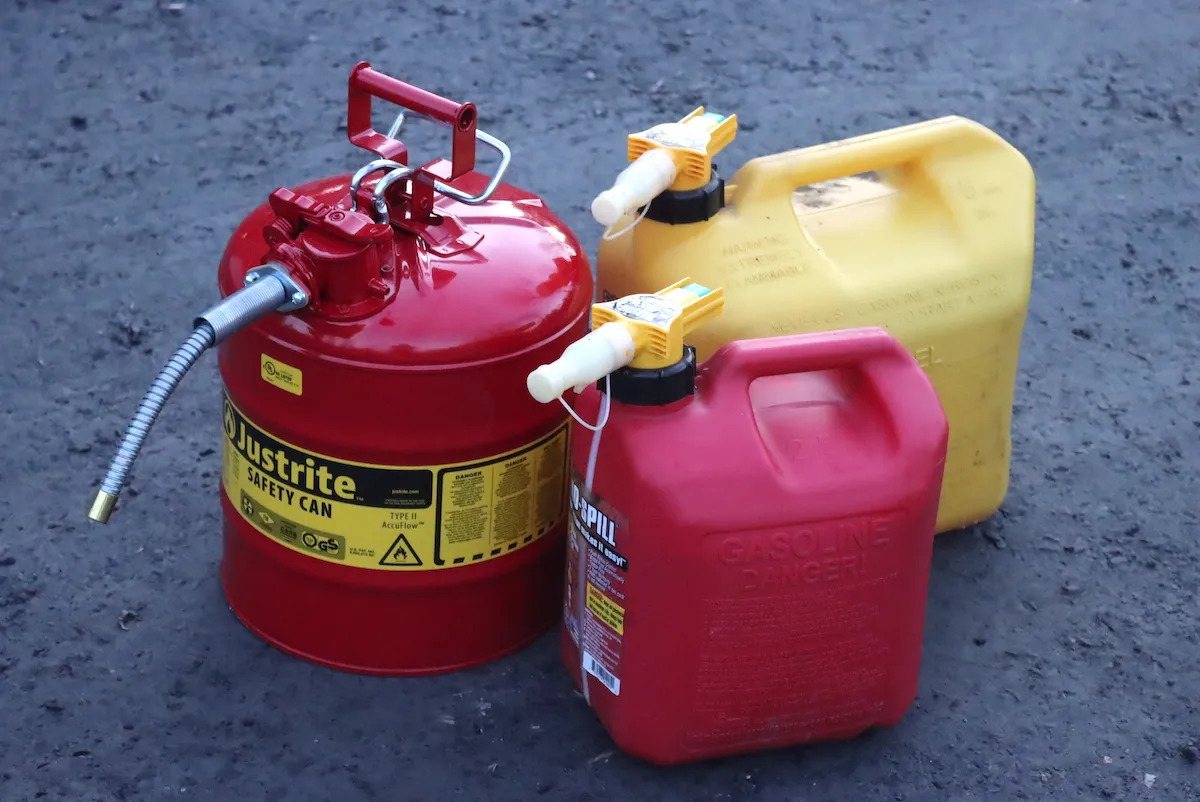

Articles
How To Store Gasoline Safely
Modified: October 28, 2024
Learn the essential tips and guidelines for safely storing gasoline in this informative article. Protect yourself and your surroundings from potential hazards!
(Many of the links in this article redirect to a specific reviewed product. Your purchase of these products through affiliate links helps to generate commission for Storables.com, at no extra cost. Learn more)
Introduction
Gasoline is a common and essential fuel used in various applications, including powering vehicles, lawn equipment, and generators. While gasoline provides us with convenience and mobility, it also poses potential risks if not stored and handled properly. The improper storage of gasoline can lead to fire hazards, environmental pollution, and even health risks.
In this article, we will explore the importance of storing gasoline safely and provide you with practical tips to ensure the proper handling and storage of this volatile fuel.
Understanding the potential dangers of storing gasoline improperly is crucial. Gasoline is highly flammable and can quickly ignite when exposed to open flames, sparks, or high temperatures. Moreover, gasoline vapors are hazardous and can be harmful if inhaled or come into contact with the skin or eyes. Even a small amount of gasoline can produce explosive vapors that can lead to serious accidents.
By following proper storage techniques, you can minimize the risks associated with gasoline storage and keep yourself, your property, and the environment safe. Let’s dive in and explore the essential steps to store gasoline safely.
Key Takeaways:
- Properly storing gasoline is crucial for safety, environmental protection, and accident prevention. Understanding the dangers, selecting the right containers, and implementing fire safety measures are essential for safe gasoline storage.
- Safe disposal of gasoline is vital to protect the environment and human health. Following local regulations, recycling or donating usable gasoline, and seeking professional assistance for disposal ensure responsible handling of this hazardous material.
Read more: How To Store Gasoline For Generator
Understanding the Dangers of Storing Gasoline
Before we delve into the specifics of storing gasoline safely, it is vital to have a clear understanding of the potential dangers involved. Gasoline is a highly flammable liquid that can ignite easily, leading to devastating fires and explosions. Improper storage and handling of gasoline increase the risk of accidents and can have severe consequences.
One of the primary risks of storing gasoline incorrectly is the potential for fire. Gasoline is highly volatile and emits flammable vapors. These vapors can travel a considerable distance and can be ignited by even the smallest spark or flame source. This is why it is crucial to store gasoline away from any potential ignition sources, such as open flames, electrical appliances, or heat sources.
In addition to the fire hazard, gasoline vapors can pose health risks if inhaled or exposed to the skin or eyes. Prolonged exposure to gasoline vapors can cause dizziness, headaches, nausea, and even respiratory issues. It is essential to handle and store gasoline in a well-ventilated area to reduce the risk of inhaling harmful vapors.
Another danger of improper gasoline storage is the environmental impact. Gasoline is toxic and can contaminate soil, water sources, and the surrounding environment if spilled or leaked. This not only harms wildlife and plant life but also poses a threat to human health if these contaminants enter the water supply.
In summary, the dangers of storing gasoline incorrectly include the risk of fire, the potential for health hazards due to exposure to gasoline vapors, and the environmental impact of spills or leaks. By understanding these dangers, we can take the necessary precautions to store gasoline safely and minimize these risks.
Selecting the Right Containers for Gasoline Storage
Choosing the right containers for storing gasoline is crucial to ensure safety and prevent any leaks or spills. It is important to use containers that are specifically designed and approved for storing and transporting flammable liquids, such as gasoline. Here are some essential factors to consider when selecting containers for gasoline storage:
- Material: Opt for containers made from durable, non-reactive materials such as metal or high-density polyethylene (HDPE). These materials are resistant to corrosion and can withstand the flammable nature of gasoline.
- Capacity: Consider the amount of gasoline you plan to store and select containers with appropriate capacities. It’s important not to overfill containers, as gasoline expands as it heats up and can cause leakage.
- Sealing Mechanism: Ensure that the containers have airtight sealing mechanisms to prevent gasoline vapors from escaping and to minimize the risk of leaks.
- Labeling and Certification: Look for containers that are labeled and certified for storing flammable liquids, including gasoline. This ensures that the containers meet the necessary safety standards.
- Spill Prevention: Choose containers with features such as built-in secondary containers or spill-proof caps to prevent spills during transportation and storage.
It is also important to note that storing gasoline in makeshift containers, such as soda bottles or glass containers, is highly dangerous and should be avoided at all costs. These containers are not designed to handle flammable liquids and can easily rupture or leak.
Additionally, it is crucial to regularly inspect your gasoline containers for any signs of damage or deterioration. Any containers that are cracked, damaged, or showing signs of wear should be replaced immediately to prevent the risk of leaks.
By selecting the right containers for gasoline storage, you can minimize the risk of leaks, spills, and potential hazards associated with improper storage. Remember, it is always better to err on the side of caution and invest in high-quality, approved containers to ensure the safety of yourself, others, and the environment.
Choosing a Safe Location for Storing Gasoline
Selecting a safe location for storing gasoline is crucial to minimize the risk of accidents and ensure the safety of yourself and others. When choosing a storage location, keep the following considerations in mind:
- Outdoors: Gasoline should always be stored outdoors and away from any living spaces or ignition sources. Choose a well-ventilated area, such as a shed or detached garage, that is not susceptible to extreme temperatures or direct sunlight.
- Away from Ignition Sources: Keep gasoline containers at least 50 feet away from ignition sources like open flames, pilot lights, electrical outlets, and heat sources. This includes water heaters, furnaces, and other appliances that can produce sparks.
- Child and Pet Safety: Ensure that the storage location is inaccessible to children and pets. Store gasoline containers in a secure area, such as a locked cabinet or storage shed, to prevent accidental access.
- Proper Ventilation: Adequate ventilation is essential when storing gasoline. Avoid storing gasoline in enclosed spaces or areas with poor airflow, as the buildup of gasoline vapors can increase the risk of fire or health hazards.
- Grounding: If possible, store gasoline containers on a level, non-flammable surface, such as concrete. This helps prevent static electricity buildup and decreases the risk of sparks igniting the gasoline.
- Away from Water Sources: Store gasoline away from water sources, such as wells, ponds, or streams, to prevent the contamination of water in case of spills or leaks. It is essential to protect both the environment and the water supply.
- Accessibility: Ensure that the storage location is easily accessible for emergency situations or when refueling vehicles or equipment. Avoid clutter or obstacles that may hinder access to the gasoline containers.
Remember to check local regulations regarding gasoline storage, as there may be specific guidelines or restrictions in your area. Taking the time to choose a safe location for storing gasoline provides peace of mind and reduces the likelihood of accidents or environmental damage.
By following these guidelines and choosing a suitable storage location, you can minimize the risks associated with gasoline storage and help to ensure the safety of yourself, your loved ones, and the environment.
Preparing the Storage Area
Before storing gasoline, it is crucial to properly prepare the storage area to ensure maximum safety and prevent potential spills or leaks. Here are some important steps to follow when preparing the storage area:
- Clean and Clear the Area: Clear the storage area of any debris, clutter, or flammable materials that could pose a fire hazard. This includes items such as rags, paper, or other chemicals. A clean and organized space reduces the risk of accidental ignition.
- Containment Measures: Consider implementing containment measures to prevent spills from spreading. This can be done by installing appropriate spill containment trays or using absorbent materials, such as spill mats or absorbent pillows, to contain any potential leaks.
- Fire Extinguisher: Keep a working and properly maintained fire extinguisher nearby. This is a critical step in case of emergencies and can help to quickly contain a fire before it can spread.
- Lighting: Ensure that the storage area has adequate lighting to allow for easy visibility. This will help you to detect any potential issues or leaks and navigate the area safely.
- No Smoking Policy: Implement a strict no smoking policy in and around the storage area. Smoking in proximity to gasoline is extremely dangerous and can easily ignite the flammable vapors.
- Emergency Contact Information: Keep a list of emergency contact numbers, including the local fire department and poison control center, in a visible and easily accessible location near the storage area. This will enable you to quickly contact the appropriate authorities in case of an emergency.
- Regular Inspections: Regularly inspect the storage area to ensure that it remains clean, organized, and free from potential hazards. Look for any signs of leaks, damage, or deterioration in the containers or the surrounding area.
- Training and Education: It is important to educate yourself and anyone else who may have access to the storage area about the proper handling and storage of gasoline. This includes understanding the risks, safety precautions, and emergency procedures.
By following these steps, you can effectively prepare the storage area and create a safe environment for storing gasoline. Taking the time to properly prepare the area significantly reduces the risk of accidents and ensures the safety of both yourself and the surrounding environment.
Read more: How To Store Gasoline Long Term
Properly Filling Gasoline Containers
When it comes to storing gasoline safely, it is crucial to understand the proper procedure for filling gasoline containers. Proper filling techniques can help prevent spills, leaks, and other potential hazards. Here are some important steps to follow when filling gasoline containers:
- Choose the Right Container: Select a gasoline container that is appropriate for the amount of fuel you need to store. Ensure that the container is clean, in good condition, and specifically designed for storing flammable liquids.
- Static Electricity Precautions: Ground yourself and the gasoline container by touching a grounded object before starting the filling process. This helps to dissipate any static electricity and reduces the risk of sparks that could ignite gasoline vapors.
- Outdoor Filling: Always fill gasoline containers outdoors in a well-ventilated area. Do not attempt to fill containers indoors or in confined spaces, as this can lead to a buildup of flammable vapors.
- Turn Off Engines and Other Equipment: Before filling gasoline containers, turn off any equipment or engines that may be nearby. This includes vehicles, generators, and any other devices that could potentially ignite gasoline vapors.
- Keep the Nozzle in Contact with the Container: When filling a container, ensure that the nozzle of the gasoline pump remains in contact with the container throughout the filling process. This prevents the buildup of static electricity and minimizes the risk of vapors escaping.
- Avoid Overfilling: Never overfill gasoline containers. Leave some room for expansion as gasoline tends to expand when exposed to heat. Overfilling can result in spills, leaks, and potentially dangerous situations.
- Secure the Cap Tightly: After filling the container, make sure to secure the cap tightly to prevent any leakage or evaporation of gasoline. Ensure that the cap is closed properly, and there are no visible signs of damage or wear.
- wUse a Funnel: When filling a smaller container or a container with a small opening, it is recommended to use a funnel. This helps to direct the flow of gasoline and reduces the chances of spillage.
Following these guidelines when filling gasoline containers ensures that the process is performed safely and reduces the risk of accidents or environmental damage. It’s crucial to always exercise caution and pay attention to your surroundings and the specific instructions for the gasoline filling station you’re using.
Remember, gasoline is a highly flammable liquid, and taking the necessary precautions during the filling process is essential for your safety and the safety of those around you.
Store gasoline in a well-ventilated, cool, and dry area, away from direct sunlight and heat sources. Use approved containers and keep them tightly sealed to prevent evaporation and minimize the risk of fire or explosion.
Storing Gasoline in a Ventilated Area
Proper ventilation is essential when it comes to storing gasoline safely. Adequate airflow helps to reduce the buildup of flammable vapors and minimizes the risk of fire or explosion. Here are some important considerations for storing gasoline in a well-ventilated area:
- Outdoor Storage: It is recommended to store gasoline containers outdoors. Choose a designated storage area that is well-ventilated and away from living spaces, ignition sources, and direct sunlight.
- Avoid Storage in Enclosed Spaces: Do not store gasoline in enclosed areas such as basements, garages attached to living spaces, or other confined spaces. Lack of proper ventilation in these areas could lead to a dangerous accumulation of gasoline vapors.
- Proper Spacing: When storing multiple containers of gasoline, ensure that there is enough space between them to allow for proper ventilation. This prevents the buildup of vapors and reduces the risk of ignition or combustion.
- Keep Containers Upright: Store gasoline containers in an upright position to minimize the chance of leakage. Storing them horizontally or at an angle increases the risk of spills and leaks, which can result in vapor buildup and potential accidents.
- Avoid Extreme Temperatures: Gasoline should not be stored in areas with extreme temperatures. High temperatures can cause gasoline to expand and potentially leak, while low temperatures may affect the integrity of the container. Choose a storage area that maintains a moderate temperature range.
- Maintain Proper Airflow: Ensure that the storage area has adequate airflow to dissipate gasoline vapors. This can be achieved by keeping windows, doors, or vents open. However, be mindful of the proximity to ignition sources while maintaining air circulation.
- Check for Vapors: Regularly inspect the storage area for any signs of gasoline vapors. If you detect a strong odor or notice a haze in the air, it is an indication that the ventilation in the area may not be sufficient. In such cases, increase ventilation or consider relocating the storage area.
- Verify Legal Requirements: Check local regulations and legal requirements for storing gasoline. Some areas may have specific guidelines regarding the ventilation and storage of flammable liquids. Adhering to these regulations ensures compliance and promotes safety.
Storing gasoline in a well-ventilated area reduces the risk of flammable vapor buildup, which is crucial for preventing fires and promoting safety. Proper ventilation enhances the overall safety of the storage area, protects the environment, and ensures the well-being of individuals in proximity to the stored gasoline.
Remember, gasoline vapors are highly flammable. Adequate ventilation is essential for keeping those vapors at a safe level and minimizing the risk of ignition or explosion.
Labeling and Marking Gasoline Containers
Properly labeling and marking gasoline containers is an important aspect of storing gasoline safely. Clear and accurate labels help to identify the contents and ensure that proper precautions are taken when handling and storing these containers. Here are some essential guidelines for labeling and marking gasoline containers:
- Use Appropriate Labels: Ensure that each gasoline container is clearly labeled as “Gasoline” or “Flammable Liquid.” This helps to identify the contents and alerts individuals to the potential hazards associated with the container.
- Include Safety Warnings: Place prominent labels on gasoline containers that provide safety warnings, such as “Keep Away from Open Flames” or “Highly Flammable.” These warnings serve as reminders and reinforce the importance of handling gasoline with caution.
- Use Waterproof and Durable Labels: Gasoline containers may be exposed to various conditions, including moisture and rough handling. Use waterproof and durable labels that will not easily fade, smear, or become illegible over time.
- Clear and Legible Information: Ensure that all labels and markings on the gasoline containers are clear and legible. This includes information such as the date of purchase, the volume or capacity of the container, and any safety specifications provided by the manufacturer.
- Special Markings for Nozzle Type: If you have gasoline containers with different nozzle types, consider marking the containers to indicate which nozzle is suitable for each specific container. This helps to prevent accidental misuse and potential leaks.
- Color Coding: Optionally, you can use color-coded labels or markings to distinguish gasoline containers from other containers storing different substances. This can help prevent confusion and minimize the risk of using the wrong container for a specific application.
- Keep Labels Visible: Ensure that labels are placed in a visible location on the gasoline containers. This allows for easy identification and ensures that individuals handling the containers have access to the necessary information and warnings.
- Regularly Inspect and Replace Labels: Regularly inspect gasoline container labels to ensure they remain intact and legible. If a label becomes damaged, faded, or difficult to read, promptly replace it to maintain clarity and accuracy.
By properly labeling and marking gasoline containers, you create awareness about the contents and potential hazards associated with them. This information helps individuals handle and store gasoline safely and serves as a reminder to exercise caution.
Remember, clear and accurate labeling is an integral part of safely storing gasoline and plays a crucial role in accident prevention and emergency response.
Handling Gasoline with Care
Handling gasoline with care is of utmost importance to ensure personal safety and prevent accidents. Gasoline is a highly flammable liquid, and mishandling it can lead to fires, explosions, and other hazardous situations. Here are some key guidelines to follow when handling gasoline:
- Always Wear Protective Gear: When handling gasoline, it is essential to wear appropriate protective gear, including gloves, safety glasses, and long sleeves. This helps to prevent direct contact with the skin and minimize the risk of injury or absorption of harmful chemicals.
- Avoid Spills and Splashes: Take precautions to prevent spills and splashes while handling gasoline. Pour slowly and carefully to minimize the risk of splashing and always use a funnel when transferring gasoline to containers with narrow openings.
- No Smoking or Open Flames: Never smoke or have open flames or sparks in the vicinity when handling gasoline. Even a tiny spark can ignite gasoline vapor, leading to a dangerous situation. Always handle gasoline in a designated area away from ignition sources.
- Keep Away from Heat Sources: Store gasoline containers away from heat sources such as direct sunlight, space heaters, and other high-temperature objects. High temperatures can cause gasoline to expand and potentially lead to leaks or container damage.
- Avoid Overfilling Containers: Do not overfill gasoline containers. Leave some space for the fuel to expand and allow for proper ventilation. Overfilling can lead to leaks, spills, and potentially dangerous situations.
- Grounding: Ground yourself and the gasoline container before transferring fuel. This can be done by touching a grounded object, such as a metal part of the vehicle or a grounded pole, to discharge any static electricity and minimize the risk of sparks.
- Transfer in Well-Ventilated Areas: Always transfer gasoline in well-ventilated areas to prevent the buildup of potentially harmful vapors. Avoid enclosed spaces or areas with poor airflow and ensure there is sufficient ventilation to disperse any gasoline fumes.
- Properly Seal Containers: Ensure that gasoline containers are tightly sealed to prevent the escape of flammable vapors. This reduces the risk of accidental ignition and keeps the surrounding environment safe.
- Proper Disposal of Soiled Rags: If you use rags to clean up spilled gasoline or wipe off containers, it is important to dispose of them properly. Place the soiled rags in a sealable, fire-resistant container to prevent the risk of spontaneous combustion.
- Wash Hands Thoroughly: After handling gasoline, wash your hands thoroughly with soap and water. This helps to remove any traces of gasoline from your skin and minimizes the risk of ingestion or skin irritation.
Following these guidelines when handling gasoline ensures safety and minimizes the risk of accidents or injuries. Remember, practicing caution and taking the necessary precautions are key to safely handling this flammable liquid.
Read more: How To Store Gasoline In 55 Gallon Drum
Fire Safety Measures for Gasoline Storage
When it comes to storing gasoline, fire safety measures are of utmost importance to prevent accidents, protect property, and ensure personal safety. Gasoline is highly flammable, and even a small spark can lead to a dangerous fire. Here are some essential fire safety measures to implement when storing gasoline:
- Fire Extinguishers: Keep at least one fire extinguisher near the storage area for immediate access. Ensure that the fire extinguisher is suitable for extinguishing fires involving flammable liquids.
- Fire Alarm and Smoke Detectors: Install fire alarms and smoke detectors in and around the storage area to provide early warning in case of a fire. Regularly test and maintain these devices to ensure their effectiveness.
- No Smoking Policy: Implement and enforce a strict no smoking policy in and around the gasoline storage area. Post clear signs and reminders to deter any smoking activities that could result in ignition.
- Fire-Resistant Storage Containers: Store gasoline in fire-resistant containers that are specifically designed for flammable liquids. These containers are designed to withstand high temperatures and reduce the risk of fire in the event of a small ignition source.
- Separate Storage Area: Keep gasoline containers separate from other combustible materials to minimize the risk of fire spread. Flammable liquids, such as gasoline, should be stored away from items such as paper, rags, and other chemicals.
- Fire-Suppression Systems: Consider installing a fire-suppression system, such as sprinklers, in the storage area. These systems can help control or extinguish the fire in its early stages, providing a critical safety measure.
- Proper Electrical Wiring: Ensure that the electrical wiring in and around the storage area is up to code and properly installed. Faulty wiring can cause electrical sparks, posing a fire risk in the presence of flammable gases or vapors.
- Fire Safety Training: Train individuals who have access to the gasoline storage area on fire safety procedures. This includes proper use of fire extinguishers, emergency evacuation plans, and how to respond to a fire incident.
- Emergency Exit Plan: Have a clearly marked emergency exit plan in the storage area, indicating the nearest exits and evacuation routes. Familiarize yourself and others with these exit routes in case of an emergency.
- Regular Inspections: Regularly inspect the storage area for potential fire hazards, such as damaged electrical equipment, flammable material buildup, or signs of leakage. Promptly address any issues or concerns to maintain a safe environment.
It is essential to prioritize fire safety when storing gasoline. By implementing these fire safety measures, you can reduce the chances of a fire and ensure a safer storage environment. Always err on the side of caution and be proactive in preventing fire-related incidents.
Disposal of Gasoline Safely
Proper disposal of gasoline is crucial to protect the environment, prevent contamination, and ensure safety. It is essential to handle gasoline waste responsibly to avoid harm to humans, wildlife, and the ecosystem. Here are some guidelines for the safe disposal of gasoline:
- Consult Local Regulations: Check your local regulations and guidelines regarding the proper disposal of gasoline. Different areas may have specific rules and protocols in place, so it’s important to comply with these regulations.
- Don’t Pour Gasoline Down the Drain or Toilet: Never dispose of gasoline by pouring it down the drain, toilet, or any other household drainage system. Gasoline is toxic and can contaminate the water supply, causing harm to aquatic life and compromising public health.
- Avoid Disposal in Household Trash Bins: Gasoline should not be disposed of in regular household trash bins. It is hazardous waste and requires special handling to prevent accidents and environmental damage.
- Consider Recycling or Donation: If the gasoline is still usable and in good condition, consider recycling or donating it to a local organization or facility that accepts used gasoline. Some recycling centers or waste management facilities have programs in place for proper disposal and recycling of gasoline.
- Transfer to Approved Containers: If you need to transport gasoline for disposal, transfer it to an approved gasoline container specifically designed for storage and transportation of flammable liquids. Ensure the container is tightly sealed to prevent leaks or spills.
- Contact Local Hazardous Waste Facilities: Many communities have hazardous waste collection facilities or designated drop-off points. Contact your local authorities or waste management organizations to inquire about proper disposal methods and locations near you.
- Professional Assistance: If you have a large quantity of gasoline or are unsure about the proper disposal method, seek professional assistance. Contact hazardous waste disposal companies or environmental agencies for guidance and safe disposal options.
- Store Unused Gasoline Safely: If you have unused gasoline that you wish to keep for future use, ensure it is stored safely in approved containers in a well-ventilated area away from ignition sources, heat, and sunlight. Follow the storage guidelines mentioned in earlier sections of this article.
Remember, gasoline is a hazardous material, and proper disposal is essential to protect both the environment and human well-being. Taking the time to dispose of gasoline responsibly demonstrates your commitment to environmental stewardship and safety.
When in doubt, always consult local authorities or waste management professionals for guidance on the best practices for gasoline disposal in your area.
Conclusion
Properly storing gasoline is essential for maintaining personal safety, protecting the environment, and preventing accidents. Gasoline is a highly flammable substance that requires careful handling, storage, and disposal. By following the guidelines and safety measures outlined in this article, you can ensure the safe storage of gasoline and minimize the risk of fire, spills, and other hazards.
Understanding the dangers of storing gasoline and selecting the right containers are the first steps in maintaining safety. Choosing a safe location, preparing the storage area, and properly filling gasoline containers further minimize risks. Storing gasoline in a well-ventilated area and labeling and marking containers appropriately help to promote safety and reduce the likelihood of accidents. Additionally, handling gasoline with care and implementing fire safety measures contribute to overall safety standards.
It is crucial to dispose of gasoline safely and responsibly, following local regulations and guidelines. Proper disposal prevents harm to the environment and ensures that gasoline does not enter water sources or contaminate public resources. Recycling or donating usable gasoline is a sustainable option, and professional assistance should be sought for large quantities or unfamiliar disposal methods.
Remember, when it comes to gasoline, safety should always be the top priority. Taking the necessary precautions, maintaining awareness, and adhering to proper storage and handling practices will help ensure personal safety, protect the environment, and prevent accidents.
By following these guidelines and implementing the best practices discussed in this article, you can confidently store gasoline safely and reduce the risks associated with this volatile fuel.
Frequently Asked Questions about How To Store Gasoline Safely
Was this page helpful?
At Storables.com, we guarantee accurate and reliable information. Our content, validated by Expert Board Contributors, is crafted following stringent Editorial Policies. We're committed to providing you with well-researched, expert-backed insights for all your informational needs.
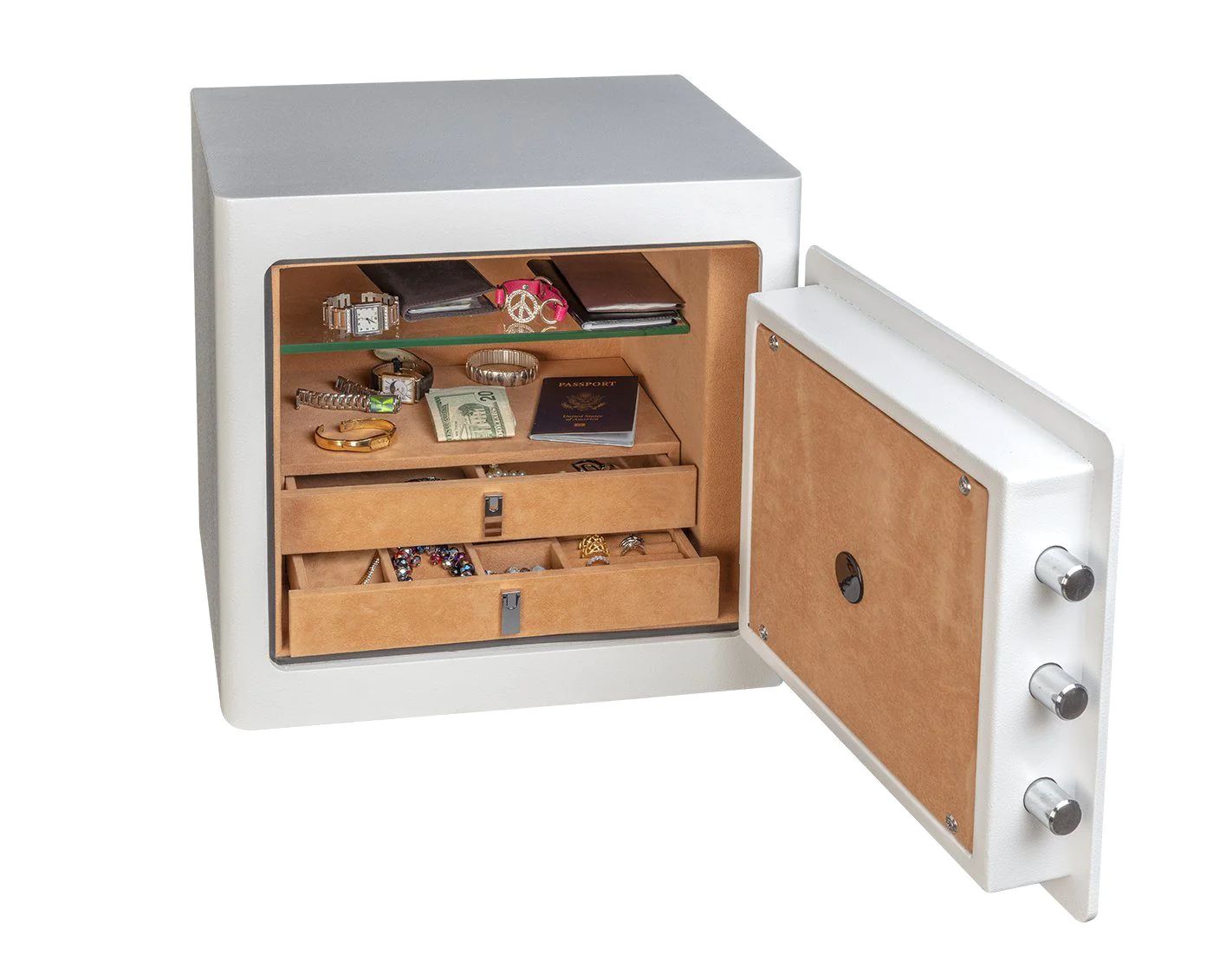
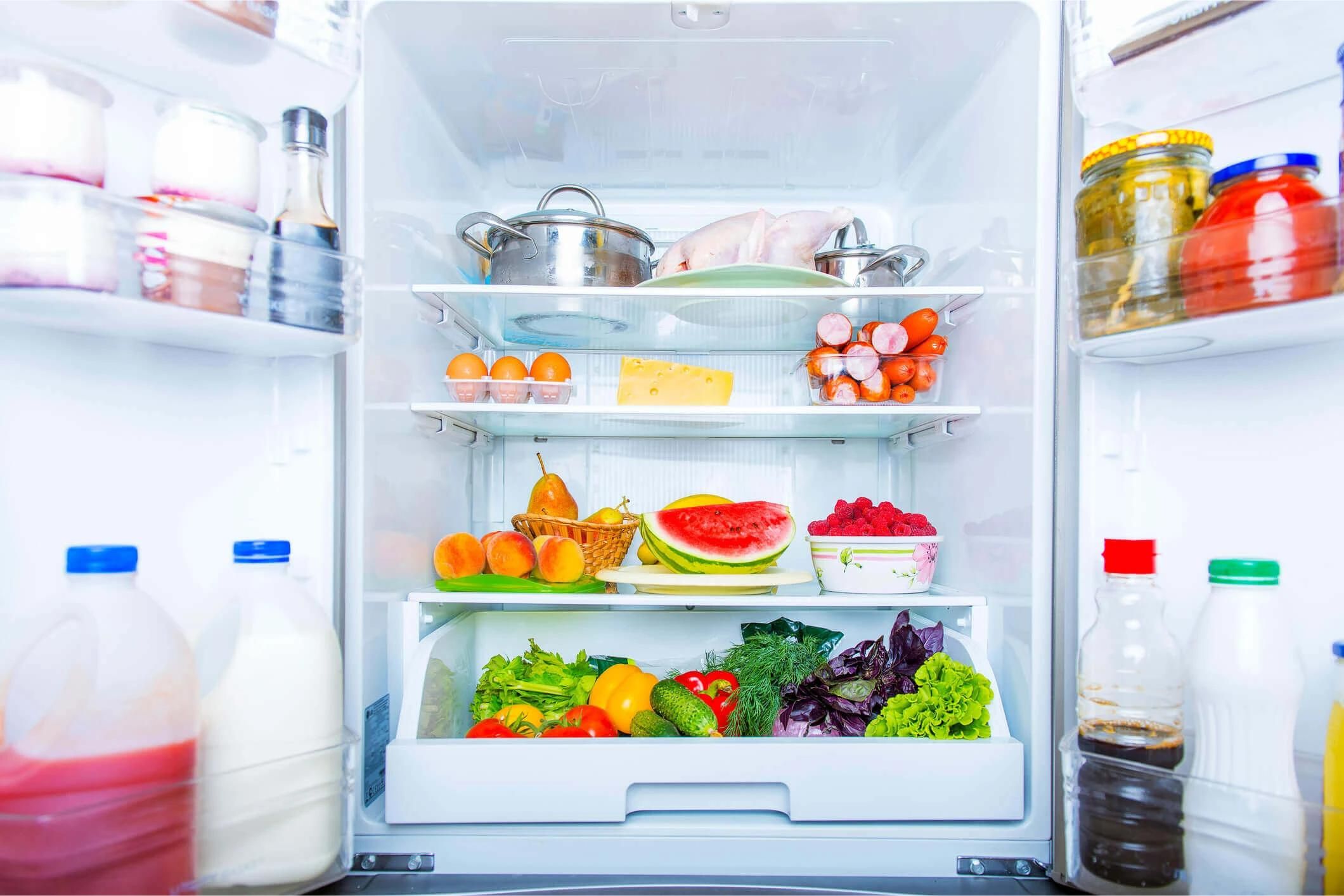





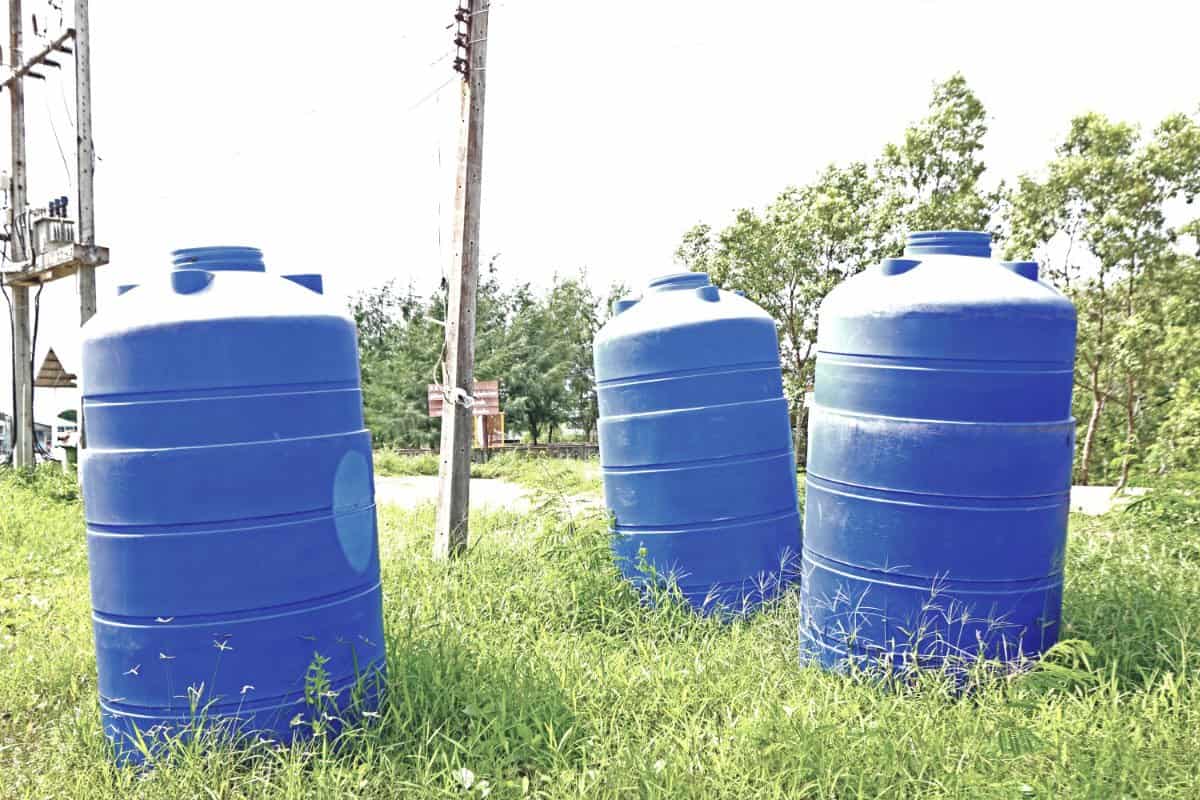

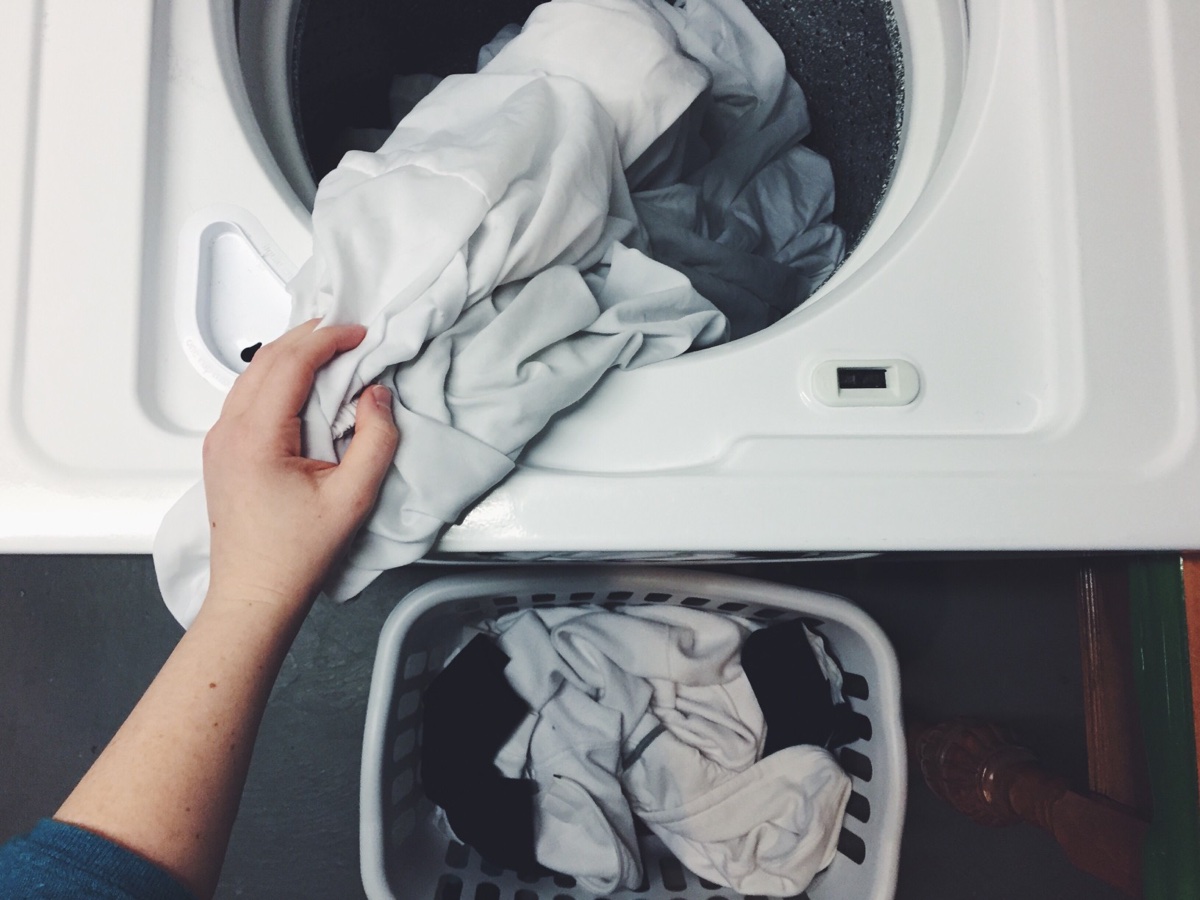




0 thoughts on “How To Store Gasoline Safely”